










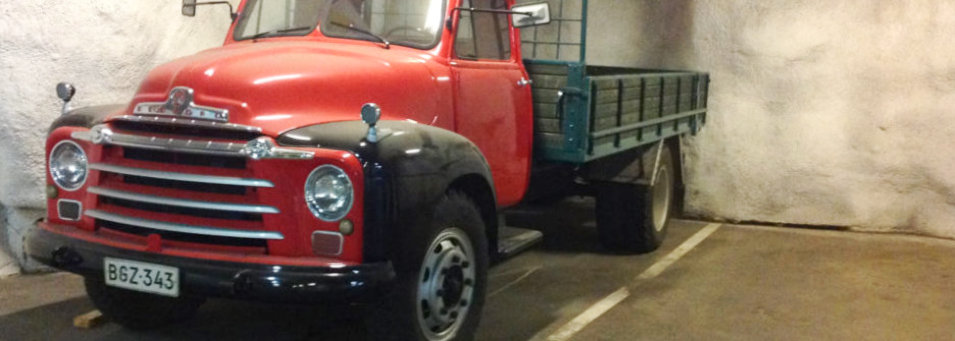

Nicknamed as “Petteri” in Finland

Bedford D5 LC2 - 58
Bedford Vehicles, usually shortened to just Bedford, was
a brand of vehicle produced by Vauxhall Motors, which
was ultimately owned by General Motors (GM).
Established in 1930 and constructing commercial vehicles, Bedford Vehicles was a leading international truck brand, with substantial export sales of light, medium, and heavy trucks
international truck brand, with substantial export sales of light, medium, and heavy trucks throughout the world. It was GM Europe's most profitable venture for several years.
Bedford's core heavy trucks business was divested by GM as AWD Ltd in 1987, whilst the
throughout the world. It was GM Europe's most profitable venture for several years.
Bedford's core heavy trucks business was divested by GM as AWD Ltd in 1987, whilst the Bedford brand continued to be used on light commercial vehicles and car-derived vans based
Bedford brand continued to be used on light commercial vehicles and car-derived vans based on Vauxhall/Opel, Isuzu and Suzuki designs. The brand was retired in 1991, subsequent GM
on Vauxhall/Opel, Isuzu and Suzuki designs. The brand was retired in 1991, subsequent GM Europe light commercials would be branded as either Vauxhall or Opel depending on market.
Europe light commercials would be branded as either Vauxhall or Opel depending on market.
1950s
1952 saw the launch of the Bedford CA light commercial, a range of vans and pick-ups similar in concept and size to (although pre-dating) the Ford Transit of 1965. These were semi-
in concept and size to (although pre-dating) the Ford Transit of 1965. These were semi- forward control, having a short bonnet with the rear of the engine protruding into the cab.
forward control, having a short bonnet with the rear of the engine protruding into the cab. Engines were the Vauxhall-based 1,508 cubic centimetres (92.0 cu in) OHV in-line four petrol
Engines were the Vauxhall-based 1,508 cubic centimetres (92.0 cu in) OHV in-line four petrol engine, with the option of a Perkins 4/99 or 4/108 diesel engine later on. Performance was
engine, with the option of a Perkins 4/99 or 4/108 diesel engine later on. Performance was adequate for the time, a maximum speed of 60 miles per hour (97 km/h) being attainable
adequate for the time, a maximum speed of 60 miles per hour (97 km/h) being attainable with the petrol engine, and offering fuel economy of 25 miles per imperial gallon (11 L/100
with the petrol engine, and offering fuel economy of 25 miles per imperial gallon (11 L/100 km; 21 mpg-US). The van initially featured a three-speed column gearchange, changing later
km; 21 mpg-US). The van initially featured a three-speed column gearchange, changing later on to a four-speed column change.
The CA was a huge seller both at home and in various overseas markets. The standard panel
on to a four-speed column change.
The CA was a huge seller both at home and in various overseas markets. The standard panel van was available in short- and long-wheelbase forms, and was also sold as chassis cab /
van was available in short- and long-wheelbase forms, and was also sold as chassis cab / chassis cowl, and became a popular basis for ice-cream vans, ambulances and camper vans.
chassis cowl, and became a popular basis for ice-cream vans, ambulances and camper vans. Known affectionately as "the Tilley", the CA enjoyed a very long production span, with only
Known affectionately as "the Tilley", the CA enjoyed a very long production span, with only minor tweaks throughout its life, including the replacement of the two piece windscreen of
minor tweaks throughout its life, including the replacement of the two piece windscreen of earlier models with a single sheet, Production ended in 1969.
earlier models with a single sheet, Production ended in 1969. The CA was replaced by the CF, a completely unrelated vehicle using new overhead camshaft
The CA was replaced by the CF, a completely unrelated vehicle using new overhead camshaft (OHC) engines, which was to have a much harder time proving itself thanks to the Ford
(OHC) engines, which was to have a much harder time proving itself thanks to the Ford Transit.
Perhaps the major event of the 1950s, was the transfer of all non car based commercial
Transit.
Perhaps the major event of the 1950s, was the transfer of all non car based commercial vehicle manufacture to the former Vauxhall shadow factory at Boscombe Road, Dunstable.
vehicle manufacture to the former Vauxhall shadow factory at Boscombe Road, Dunstable. Bedford Dunstable Plant, dating originally from 1942, was extensively rebuilt and extended
Bedford Dunstable Plant, dating originally from 1942, was extensively rebuilt and extended between 1955 and 1957, when all production lines were said to be over a mile long.
between 1955 and 1957, when all production lines were said to be over a mile long. Subsequently, all commercial vehicle manufacture would be concentrated here, with only
Subsequently, all commercial vehicle manufacture would be concentrated here, with only vans and car based commercials remaining at the Luton plant. Production of the Bedford
vans and car based commercials remaining at the Luton plant. Production of the Bedford commercial vehicle range would remain here until production ceased in the 1980s.
commercial vehicle range would remain here until production ceased in the 1980s. The 1950s also saw the launch of the popular S type trucks, the so-called Big Bedfords, which
The 1950s also saw the launch of the popular S type trucks, the so-called Big Bedfords, which brought Bedford into the 7 ton range. The S series was immortalised in RL form – a four-
brought Bedford into the 7 ton range. The S series was immortalised in RL form – a four- wheel drive, high ground clearance version, as the "Green Goddess" emergency fire tender,
wheel drive, high ground clearance version, as the "Green Goddess" emergency fire tender, used by the Auxiliary Fire Service until 1968, then until 2004 over 1000 were held in reserve
used by the Auxiliary Fire Service until 1968, then until 2004 over 1000 were held in reserve by the Home Office for use in the event of fire-service industrial action or other serious
by the Home Office for use in the event of fire-service industrial action or other serious emergencies. They were disposed of by the Home Office in 2005. Several have found new
emergencies. They were disposed of by the Home Office in 2005. Several have found new homes in African countries that lack a developed fire-fighting service, such as Kenya. The C
homes in African countries that lack a developed fire-fighting service, such as Kenya. The C series of 1957 was a forward-control derivative of the S series, and outwardly very similar to
series of 1957 was a forward-control derivative of the S series, and outwardly very similar to it.
it. These vehicles were available in rigid and tractor units, with either petrol or diesel engines.
These vehicles were available in rigid and tractor units, with either petrol or diesel engines. The UK military were a huge customer for Bedford RLs using a 4.9 litre straight six petrol
The UK military were a huge customer for Bedford RLs using a 4.9 litre straight six petrol engine. Many RLs found their way into the armed forces of Commonwealth countries and
engine. Many RLs found their way into the armed forces of Commonwealth countries and later into civilian use.
later into civilian use. Alongside the S series trucks, the SB bus was released in 1950, and immediately became a big
Alongside the S series trucks, the SB bus was released in 1950, and immediately became a big seller in India, Pakistan, Australia, New Zealand and Africa, as well as in the UK. The SB
seller in India, Pakistan, Australia, New Zealand and Africa, as well as in the UK. The SB chassis was also used as a basis for specialised vehicles, such as mobile libraries, fire
chassis was also used as a basis for specialised vehicles, such as mobile libraries, fire engines, and civil defence control units. The largest fleet of SB buses in the world belonged
engines, and civil defence control units. The largest fleet of SB buses in the world belonged to New Zealand Railways road Services, with 1280 SB buses built between 1954 and 1981.
to New Zealand Railways road Services, with 1280 SB buses built between 1954 and 1981. The Bedford TK range replaced the S type in 1959, but the RL continued in production until
The Bedford TK range replaced the S type in 1959, but the RL continued in production until 1969, when it was replaced by the M type, which used the basic cab of the TK and the
1969, when it was replaced by the M type, which used the basic cab of the TK and the mechanicals of the RL with minimal changes.
mechanicals of the RL with minimal changes. The pre-war K, M and O types continued in production alongside the heavier S types until
The pre-war K, M and O types continued in production alongside the heavier S types until 1953. Vauxhall had already gone for a transatlantic styling with its E Model Wyvern and Velox
1953. Vauxhall had already gone for a transatlantic styling with its E Model Wyvern and Velox saloons, and Bedford followed suit with its mid-range of trucks in 1953. Designated as the TA
saloons, and Bedford followed suit with its mid-range of trucks in 1953. Designated as the TA series, the new range were mechanically very similar to their predecessors, but featured a
series, the new range were mechanically very similar to their predecessors, but featured a new Chevrolet-inspired cab. The 'T' designation meant "truck", so the range is generally
new Chevrolet-inspired cab. The 'T' designation meant "truck", so the range is generally referred to as the A series. Numbers 2, 3, 4 and 5; as in A2, etc., identified the weight
referred to as the A series. Numbers 2, 3, 4 and 5; as in A2, etc., identified the weight rating. A factory-fitted Perkins diesel engine was an option. The TA (A) series was updated in
rating. A factory-fitted Perkins diesel engine was an option. The TA (A) series was updated in 1957, and became the TJ, or J series.
1957, and became the TJ, or J series. The Bedford TJ normal control light truck was introduced in 1958, available with either
The Bedford TJ normal control light truck was introduced in 1958, available with either petrol or diesel engines. Although never a big seller in the home market (with the exception
petrol or diesel engines. Although never a big seller in the home market (with the exception of the GPO), it was a big export earner in developing countries, due to its basic layout and
of the GPO), it was a big export earner in developing countries, due to its basic layout and specification, and remained in production (for export markets only) until production of
specification, and remained in production (for export markets only) until production of Bedford vehicles ceased.
Bedford vehicles ceased.

1958
 The collections Bedford has been
driven only ~8.000 kilometres. It
served as a water tank supply of a
firesquad before restoration.
The collections Bedford has been
driven only ~8.000 kilometres. It
served as a water tank supply of a
firesquad before restoration.

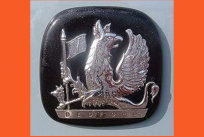
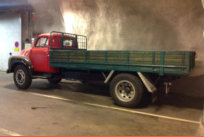
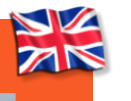

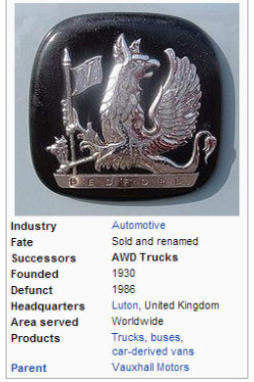
Photos mainly by Matti Kreivilä. Historical facts and technical details of the vehicles provided by Wikipedia. Movies YouTube.






